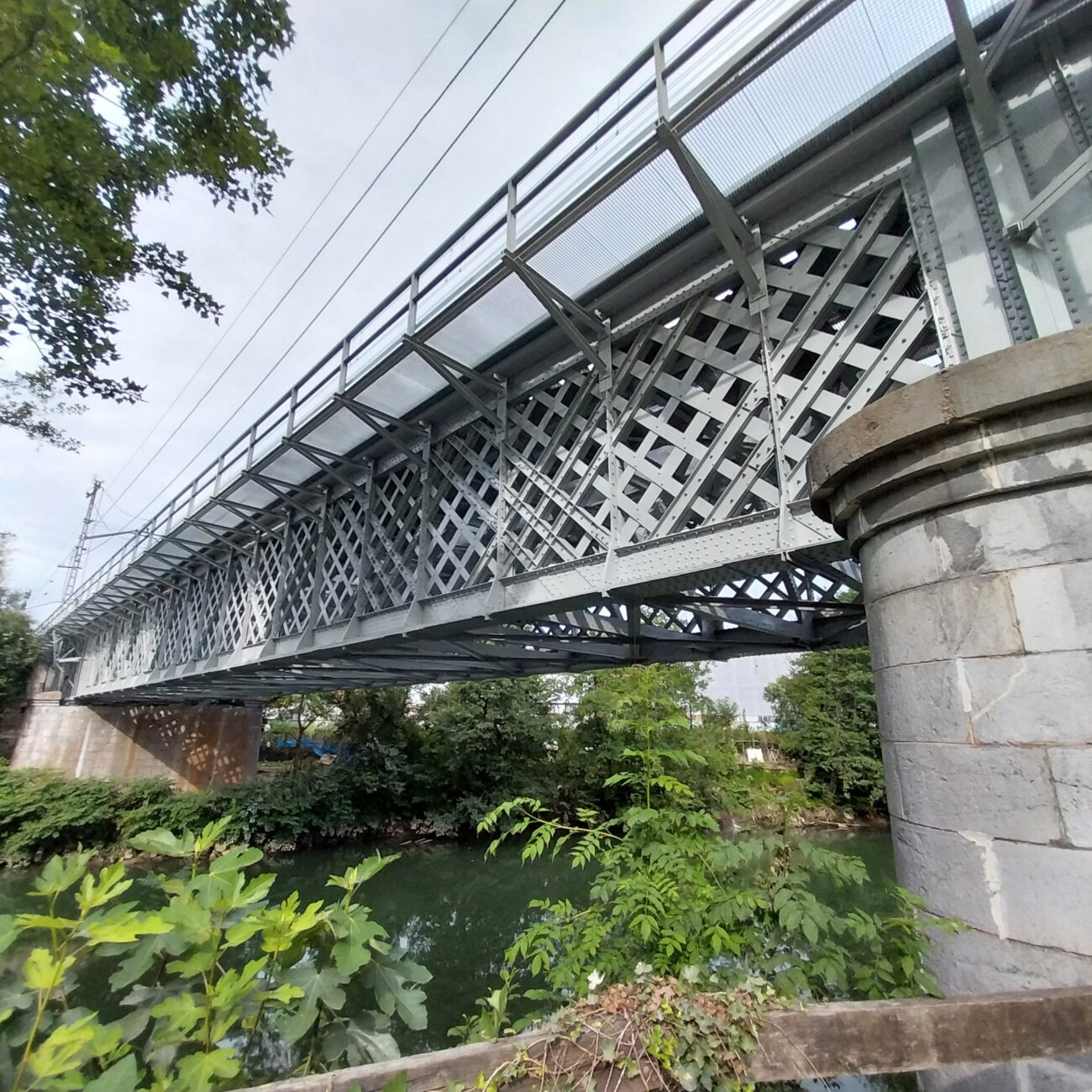In 1864, the Basque sections of the Madrid-Hendaye railway line, considered the most complex due to the difficult orography of the area, were finally inaugurated, and with them, the viaducts of Ormáiztegui and Villabona, two of the great engineering works of the line that share typology, aesthetics and materials. The former was in service until 1995, and the latter, with 160 years in service, will still be in service for a few more years, since the construction of a new bridge in parallel is planned to support the bypass, with a project by INES.
The bridge crosses the Oria River, the border between the Gipuzkoan towns of Villabona and Zizurkil, and currently supports the traffic of the Donostia commuter network, medium and long distance, and a large volume of goods, since the line serves the port of Pasajes and connects with France through Hendaye. It is resolved with three metallic spans of 14,300+44,730+14,020 m. The first two (Zizurkil side and over the river) are original of the line and are formed by fifth order lattices of puddled iron. The trusses of the third span (Villabona side) were replaced in 1967 by four full web metal girders, allowing the traffic of a first bypass of the N-I, and currently of a promenade and bicycle lane. The substructure is formed by piles and factory abutments. It supports a double Iberian gauge track and is electrified.
It is therefore a bridge designed to support loads that became obsolete, with a very long useful life, so that towards the end of the twentieth century began to study the increase of its capacity. INES had the opportunity to analyze the bridge in 2014 when, at the request of ADIF, a study of the structural behavior of the bridge under current loads was carried out, concluding in the need to repair and reinforce some elements. Prior to this date, the bridge already had a 60 km/h limitation that reduced service.
In 2022, INES provided technical assistance for works aimed at eliminating this speed limitation and returning the bridge to an adequate level of service and functionality. The main tasks were as follows: reinforcement of key elements such as uprights, diagonals, and a new upper bracing; crawling of the structure in the abutment and pier on the Zizurkil side to rehabilitate the metal supports; reinforcement of the pier on the Villabona side; new service walks; integral painting; and electrical protection of the structure.
In a 160 years old bridge, each element has a particular geometry, so a workshop was set up on site and a template had to be created for all the reinforcement elements to adapt them to the existing geometry, with bolted joints to avoid fatigue problems that would result from welding the puddled iron. For the rehabilitation of the supports of the abutment and pier on the Zizurkil side, it was necessary to define a crawling procedure coordinated with an electronic control unit, since there were certain elements that gave continuity to the two original spans and it was necessary to avoid subjecting the iron to greater stresses. During the works, once the scaffolding had reached the pier on the Villabona side and the vegetation had been removed, it was discovered that the fixed supports were considerably displaced from their position and had caused the fall of a crowning ashlar, for which a reinforcement of the pier had to be designed and the fallen ashlar had to be urgently restored. Finally, the bridge was sandblasted and painted, with the difficulties associated with the impossibility of encapsulating it due to the presence of the overhead catenary and the rainy weather in the area.
